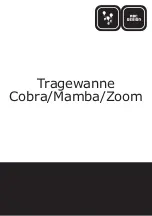
6250 Servo Controller User Guide
Revision B Change Summary
The following is a summary of the primary technical changes to this user guide since the last version was released.
This user guide, p/n 88-013413-01B (released on October 18, 1993), supersedes 88-013413-01A.
T o p i c
D e s c r i p t i o n
S e e A l s o
6250-ANI Analog Input Option
is Released
New Option/Feature: The 6250-ANI option was released at the same
time this user guide revision B was released. The -ANI option is a
±
10V, 14-
bit analog input (with anti-aliasing filter) that is sampled at the servo update
rate (set with the
SSFR
command). One
ANI
input terminal is located on each
DRIVE
connector. The input value can be transferred to the terminal with the
TANI
command, or used in a assignment or comparison operation using the
[ANI]
command (e.g.,
VAR1=1ANI
). The
TANI
and
[ANI]
commands are
used only by the -ANI option, not the standard 6250.
Pg. 16, 54 &
68
Analog Voltage Override
New Feature (see
Program Debugging below)
Pg. 67 & 95
Continuous Mode
Clarification: While in the continuous mode (
MC1
), one of the factors that
can stop motion is if the load trips a switch for a general-purpose input that is
configured as a Kill input (
INFNCi-C
) or a Stop input (
INFNCi-D
).
Pg. 53
Drive Fault Monitoring
Clarification: You must enable the input functions with the
INFEN1
command before the drive fault input will be recognized. Also, be sure to set
the drive fault level (
DRFLVL
) appropriately for the drive you are using.
Pg. 19, 58 &
102
Encoders
Clarification: The Compumotor E Series incremental encoders all have
the same cable color codes.
Pg. 12 & 103
Error Handling
Clarification: When an error occurs, the controller will
GOTO
or
GOSUB
,
depending on the error condition (an error resolution table is provided).
Pg. 98
Homing
Clarification: After the homing operation is successfully completed, the
absolute position register is reset to zero.
Pg. 49
Inputs:
Debounce Time
New Feature: The
INDEB
command has been included to allow you to set
the debounce time for the 24 general-purpose programmable inputs and the 2
trigger inputs. The range is 1 - 250 ms, in even increments. The default
debounce time is 4 ms for the 24 inputs, and 25 ms for the trigger inputs.
Pg. 58 & 61
Power Input (AC)
Correction: The power connection drawing was misleading by stating the
AC input power range was 100 - 120VAC; it is actually 85 - 240VAC.
Pg. 5
Program & Command Buffer
Execution Control
Clarifications:
Deceleration after a stop input or command—In all variations of the
COMEXS
mode, upon receiving a stop input or stop command,
motion will decelerate at
the preset
AD
/
ADA
value.
Resuming after a stop or pause—In the
COMEXR1
&
COMEXS1
modes, you can
resume program execution and/or motion with a
!C
command or the pause/
resume input (
INFNCi-E
)
only after the move in progress is completed.
Pg. 86
Pg. 60-61 &
86-87
Program Debugging
New Features & Clarifications:
Simulating Analog Input Voltages: (new feature) A new feature called
Analog Voltage Override (enabled with the
ANVOEN
command and
programmed with the
ANVO
command) allows you to simulate a voltage on the
analog input channels (input channels 1 - 3 on the
JOYSTICK
connector).
Programming Error Messages: (clarification) The 6200 can display error
messages and/or a error prompt (
?
), depending on which error level is
selected with the
ERRLVL
command. The default error level (
ERRLVL4
)
displays both the message and the error prompt).
Identifying Bad Commands: (new feature) When the 6200 detects an error
with a command, you can issue the
TCMDER
command to find out which
command caused the error. This is especially useful when downloading a
program.
Pg. 67 & 95
Pg. 97
Pg. 97
Program Flow Control
New Feature: The
JUMP
command was added to allow an unconditional
branch to another program and not return. The reason program control does
not return is because all nested
IF
,
WHILE
and
REPEAT
statements, loops,
and subroutines are cleared.
Pg. 88




































